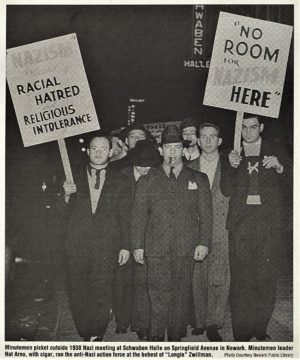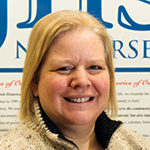
Today marks the anniversary of Kristallnacht, an annual reminder of the atrocities committed against the Jews of Germany 84 years ago and also a reminder of the resilience of the Jewish people in the face of adversity and antisemitism.
Recently a group of people unfurled banners with antisemitic slogans across the 405 Freeway in Southern California. That same week, athletes and other celebrities reposted notorious antisemitic tweets. And closer to home, anti-Zionist and antisemitic acts are taking place at schools and universities across the region.
There’s much public shock and fear around the recent rise in antisemitic incidents, but, as American Jews, we know that this type of rhetoric is nothing new in this country.
Between 1880 and 1920, more than 20 million immigrants entered the United States, including more than two million Jews. Xenophobia and fear of competition for jobs and land prompted Congress to pass the 1924 Immigration Act, limiting the number of migrants to only 2 percent of the origin country’s population. These laws were particularly restrictive to countries in Eastern and Southern Europe where large numbers of Jews faced persecution.
Post-World War I antisemitism was on the rise in the states as declarations of loyalty to Aryan groups was growing. By the time America entered WWII, the tropes against Jews in this country had already been well established and despite the over 550,000 Jewish servicemen and women who served, factions of American citizenry still believed in the Nazi propaganda that the causes of the war were a Jewish plan against Germany.
Federation departments like the Jewish Community Relations Committee (JCRC) have continually been at the frontlines of working in the community to combat antisemitism. Organized in 1944, the Community Relations Council (CRC) was a union of committees of several existing Jewish charities, including the Jewish War Veterans and B’nai B’rith. Early leaders were Michael Stavitsky, Rabbi Joachim Prinz, and Samuel Flowerman.
The original CRC was a council appointed by the Federation’s board of trustees that established the official Federation position on various issues affecting MetroWest, the United States, and the world.
In the September 25, 1944, newsletter, the CRC proclaimed its objectives as:
- Combating antisemitism as un-American
- Improving relationships between Jews and non-Jews; and
- Coordinating and unifying community relations efforts of Essex County Jewry to effect singleness of purpose and strengthening of morale.
Interfaith understanding and, increasingly, interracial understanding were also prominent in the post-War documents of the CRC collection found at the Jewish Historical Society’s archive. Today’s JCRC continues the work of vital relationship building as a key to strengthening our community and combating hatred.
Just as the European Jews experienced the kindness of righteous gentiles, we are grateful to those non-Jewish allies who have shown a strong solidarity with our Jewish community throughout the years. As Rabbi Dresner marched in the south in support of civil rights, Sister Rose Thering was a tireless advocate in combatting prejudice, Imam Wahy Deen Shareef worked to stress the importance of interfaith dialogue and countless other members of interfaith coalitions have worked to tackle the threats to theirs and the Jewish community.

